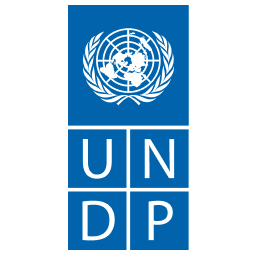How is Guinea addressing food insecurity?
Published on 09 August 2022
Overview
Aquaculture, an alternative solution to reduce food insecurity and child malnutrition because it guarantees the production of fish throughout the year.
Project Background
The Support for the Development of Upper and Middle Guinea Aquaculture (PADAHMG) project is co-financed by the Russian Government and the Japanese Embassy in close collaboration with the United Nations Development Program (UNDP) and the Guinean State.
In Guinea, food insecurity is largely due to dependence on rainfall for agriculture and natural disasters that terrorize populations. Aquaculture is an alternative solution to reducing food insecurity and child malnutrition because it guarantees fish production throughout the year. The full potential of aquaculture remains largely untapped. The objective of the project is to contribute to improving food and nutritional security in the regions of Upper and Middle Guinea through three main results: (i) the National Aquaculture Agency of Guinea (ANAG) and its decentralized services have the technical and operational capacities to provide better technical support and monitoring of fish farmers, (ii) 35 fish farming sites are developed and stocked and (iii) the availability of fish on the local market is increased. The project covers seven (7) prefectures including four (4) in Middle Guinea (Mamou, Dalaba, Pita and Labé) and three (3) in Upper Guinea (Mandiana, Siguiri and Kankan)”.
Methodology
The approach is divided into three (3) main steps:
- Design of questionnaires to collect quantitative and qualitative data of better quality with ArcGIS Survey123. These designed questionnaires were integrated into smartphones followed by a pilot test. Subsequently, the amendments and adjustments if possible were taken into account before the actual descent on the ground.
- Collection of actual data on fish ponds in the administrative regions of Upper and Middle Guinea. This step was supported by the animators recruited on behalf of the Project. – The stage of data collection on fish ponds was supported by the facilitators from where we had to collect data on the species stocked, the type of ponds built, quantity fished and sold, the induced effects, number of women involved, taking pictures and also taking geographical data. Visits of some women's achievements were made to measure the commitment of women in fish farming. The team took care to carry out audio and video interviews as well as some photos helping to facilitate the analysis and interpretation of the facts by the PMU and the UNDP Guinea team.
- After collecting field data using the tools designed in ArcGIS Survey123, we proceeded to pool the results of field surveys with the cartographic approach. This allowed us to set up a Dashboard presenting the results in the form of a cartographic view with qualitative and qualitative analyzes for intuitive and interactive data visualization.
About this dashboard
The dashboard enabled the user to not only interact with the data collected on the fish sites and view histograms on the types of fishponds, the number of fish received, etc. but also download this data for other useful purposes.
For more information please view the story map
Contact
For additional information about the project, please contact: Emmanuel.kourouma@undp.org






